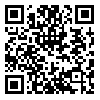BibTeX | RIS | EndNote | Medlars | ProCite | Reference Manager | RefWorks
Send citation to:
URL: http://jdisabilstud.org/article-1-3597-en.html

 , Leila Asadi2
, Leila Asadi2 
 , Zahra Farsi3
, Zahra Farsi3 
 , Mohammad Ali Goodarzi *4
, Mohammad Ali Goodarzi *4 
 , Mobina Sohrabi Rezvan5
, Mobina Sohrabi Rezvan5 
 , Mojgan Nezamabadi6
, Mojgan Nezamabadi6 

2- Master's Degree in Clinical Psychology, Department of Psychology, Central Tehran Branch, Islamic Azad University, Tehran, Iran
3- Master's Degree in Educational Psychology, Department of Psychology, North Tehran Branch, Islamic Azad University, Tehran, Iran
4- Full Professor, Department of Clinical Psychology, Shiraz University, Shiraz, Iran
5- Master's Degree in Family Counseling, Counseling Department, Central Tehran Branch, Islamic Azad University, Tehran, Iran
6- Master's Degree in General Psychology, Department of Psychology, Arak Branch, Islamic Azad University, Arak, Iran
Abstract
Background & Objectives: One of the major problems faced by nurses is insomnia and sleep disorders. Several factors, such as stress, anxiety, and changes in sleep patterns, can contribute to insomnia in nurses. Additionally, insomnia in nurses is primarily caused by work–related pressures and the environmental conditions in which they work. In addition to insomnia, nurses are at risk for other emotional and cognitive problems, such as psychological distress and executive function deficits. Considering the negative consequences of insomnia, psychological distress, and impaired executive functions in nurses with insomnia, many approaches have been developed to improve these psychological problems. Two of these approaches are metacognitive therapy and short–term dynamic psychotherapy. Comparing these two approaches allows physicians and psychologists to choose the best treatment strategy based on the specific needs and problems of nurses, especially nurses who have insomnia. As a result, it can help improve sleep quality, reduce psychological distress, and enhance executive functions. Accordingly, the present study aimed to compare metacognitive therapy and short–term psychodynamic therapy on sleep quality, psychological distress, and executive functions of nurses with insomnia.
Methods: The present study was quasi–experimental research and employed a pretest–posttest design with a control group. The study population consisted of all nurses working in hospitals in Karaj City, Iran, from August 2024 to March 2025. Using a voluntary sampling method, 45 nurses with insomnia were included in the study as the sample. These individuals were randomly assigned to two experimental groups and one control group (15 people in each group). The inclusion criteria were insomnia, as indicated by a cut–off score of greater than 16 on the Pittsburgh Sleep Quality Index, consent to and cooperation in the study, and regular attendance at therapy sessions. The exclusion criteria included dissatisfaction with and non–cooperation in the study, as well as absence from therapy sessions. The first experimental group received the Metacognitive Therapy Protocol (Wells, 2011), and the second experimental group received Short–Term Dynamic Psychotherapy (Davanloo, 2001). It should be noted that the control group was met at the training location (in a different room from the experimental group's room) and read and reviewed the book. Subjects in all three groups responded to the Pittsburgh Sleep Quality Index (Buysse et al., 1989), the Kessler Psychological Distress Questionnaire (Kessler et al., 2002), and the Barkley Executive Function Questionnaire (Barkley, 2012) at the beginning and end of the study. Data analysis was performed at two levels: descriptive and inferential. At the descriptive level, statistical indicators such as the mean and standard deviation were used. At the inferential level, univariate analysis of covariance and Bonferroni post hoc test were used to examine the research objective. Data were analyzed at a significance level of 0.05 and in SPSS software version 28.
Results: The difference between the experimental and control groups was significant in all three variables of sleep quality (p<0.001), psychological distress (p<0.001), and executive functions (p<0.001) in the posttest phase. However, short–term dynamic psychotherapy had a greater effect on sleep quality (p<0.001) and psychological distress (p=0.008), and metacognitive therapy was more effective in improving executive functions (p=0.004).
Conclusion: It is concluded that both metacognitive therapy and short–term psychodynamic therapy are interventions that have a positive effect on sleep quality, psychological distress, and executive functions of nurses with insomnia. However, short–term psychodynamic therapy is more effective in improving the quality of sleep and psychological distress of these individuals, and metacognitive therapy has a greater role in improving their executive functions.
| Rights and permissions | |
 |
This work is licensed under a Creative Commons Attribution-NonCommercial 4.0 International License. |

